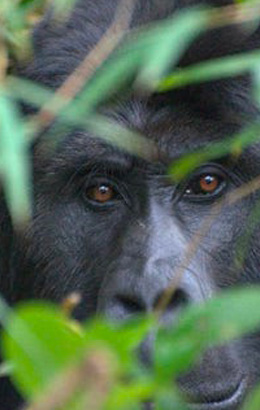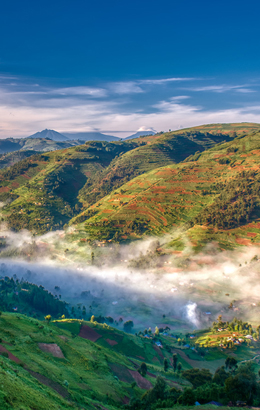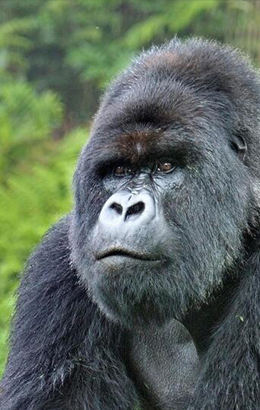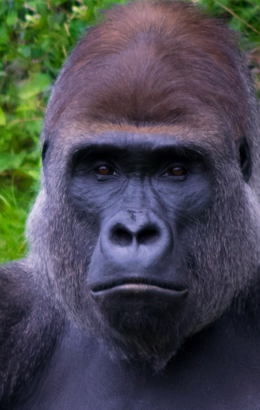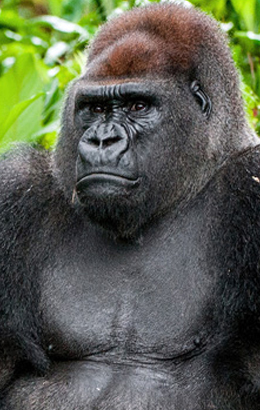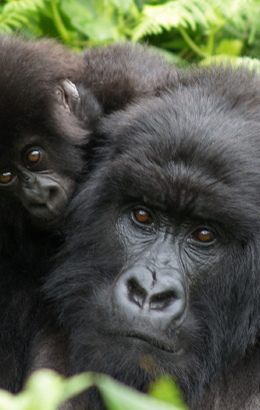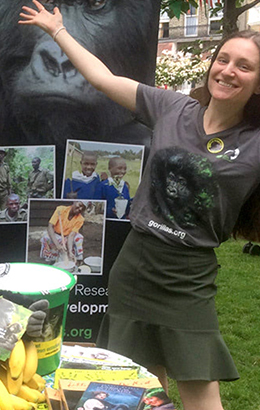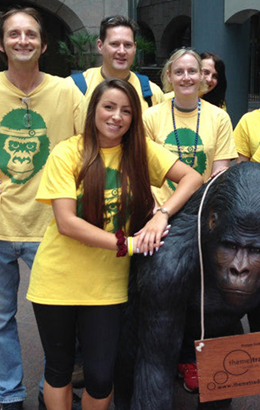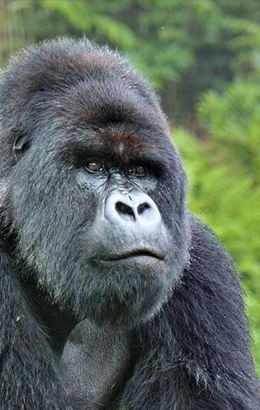5 reasons why the eastern lowland gorilla is now Critically Endangered
Hi, this is Henry,
Last month, the IUCN (International Union for the Conservation of Nature) published its latest Red List of endangered species. Sadly, it just confirmed what many of us working in gorilla conservation have feared for some time: that the eastern lowland gorilla (Gorilla beringei graueri) is now classed as ‘Critically Endangered’. This magnificent species, the largest of all the primates, is just one step away from vanishing forever. How has it come to this? Well, there are a number of factors:
1. Violence and insecurity: The Civil War that long raged here in the Democratic Republic of the Congo has officially come to an end. But that doesn’t mean there is peace here. In fact, the opposite is true. The east of the country is especially insecure. Far away from the capital city, Kinshasa, rebel militia terrorise villages across the region. And they do not just stick to the villages and towns. Often, the militia enter the gorilla habitat, creating a warzone out of what should be a sanctuary. Understandably, rangers struggle to carry out their important work under such circumstances, leaving the eastern lowland gorillas at grave risk.
2. Mining: DR Congo is one of the most mineral-rich places on the planet. Over the past few decades, it has become an increasingly important source of materials for use in the electronic industry and, most recently, for the mining of coltan and other vital materials used to make mobile phones and laptops. Often these mines – many controlled by gangs of armed rebels – are completely illegal, operating outside of national and international law. In many cases, the coltan is ‘whitewashed’ and through a complex process made to appear legal and ethical, but more often than not it has come from an illegal mine, usually one built in the heart of the gorilla habitat.
3. Poaching: The indigenous people of the forests of DR Congo have long regarded gorillas as their relatives. The Kisimba clan (Bahumba) still consider the gorilla to be their patron-god. They believe that gorillas will protect them from evil spirits and curses. Thus, gorillas are sacrosanct to local people, and so cannot be hunted. Tragically, the armed militia that run the illegal mines in the protected forests do not take a similar view to nature. They rely on forest resources to feed illegal workers and sustain their camps. My colleague – and GO chairman – Ian Redmond has spoken out about the worrying rise in the number of lowland gorillas being trapped and eaten as bushmeat, as well as elephants and chimpanzees. Unfortunately, impoverished villagers from the communities surrounding the National Park also trespass as poverty drives them there. They search for small animals to feed themselves and their families. All too often, the crude rope or wire snares they lay on the forest floor trap gorillas and they do not survive.

4. The illegal wildlife trade: A lack of security allows criminals to thrive and so the illicit trade and the illegal trafficking of animals continue. Even if one infant gorilla is taken from the wild and sold to an unscrupulous zoo (usually in Asia), this carries devastating impacts on entire gorilla families. Just like us, the gorillas are emotional animals. They show signs of stress when they lose a member. Furthermore, their existence depends on thriving populations. Unfortunately, the extended period of childhood in gorillas, just like in humans, means that they cannot quickly recover from losing an infant. Nor can the infants thrive after being sold as pets or to unethical zoos, without developing lifelong emotional scars and behavioural issues.
5. Habitat loss: Less dramatic but just as destructive is the slow loss of the Congo’s forests. The Congo Basin is home to the second biggest rainforest on Earth, after the Amazon. It’s often called the lungs of the world, due to its important role in absorbing carbon dioxide. But it’s also under massive pressure from human populations who live nearby and are desperate for building materials, food and the income timber brings. The east of the country is one of the most densely-populated places on the planet and millions of people need space and resources. Little by little, the forest is being eaten away as villagers cut down trees to establish small plots of land. But even this isn’t enough: non-sustainable farming methods mean this land is only good for one or two seasons, so even more forest needs to be destroyed. Only through projects like The Gorilla Organization’s pioneering Sustainable Agriculture initiative and tree planting can this vicious cycle be broken and the eastern lowland gorilla left in peace.
